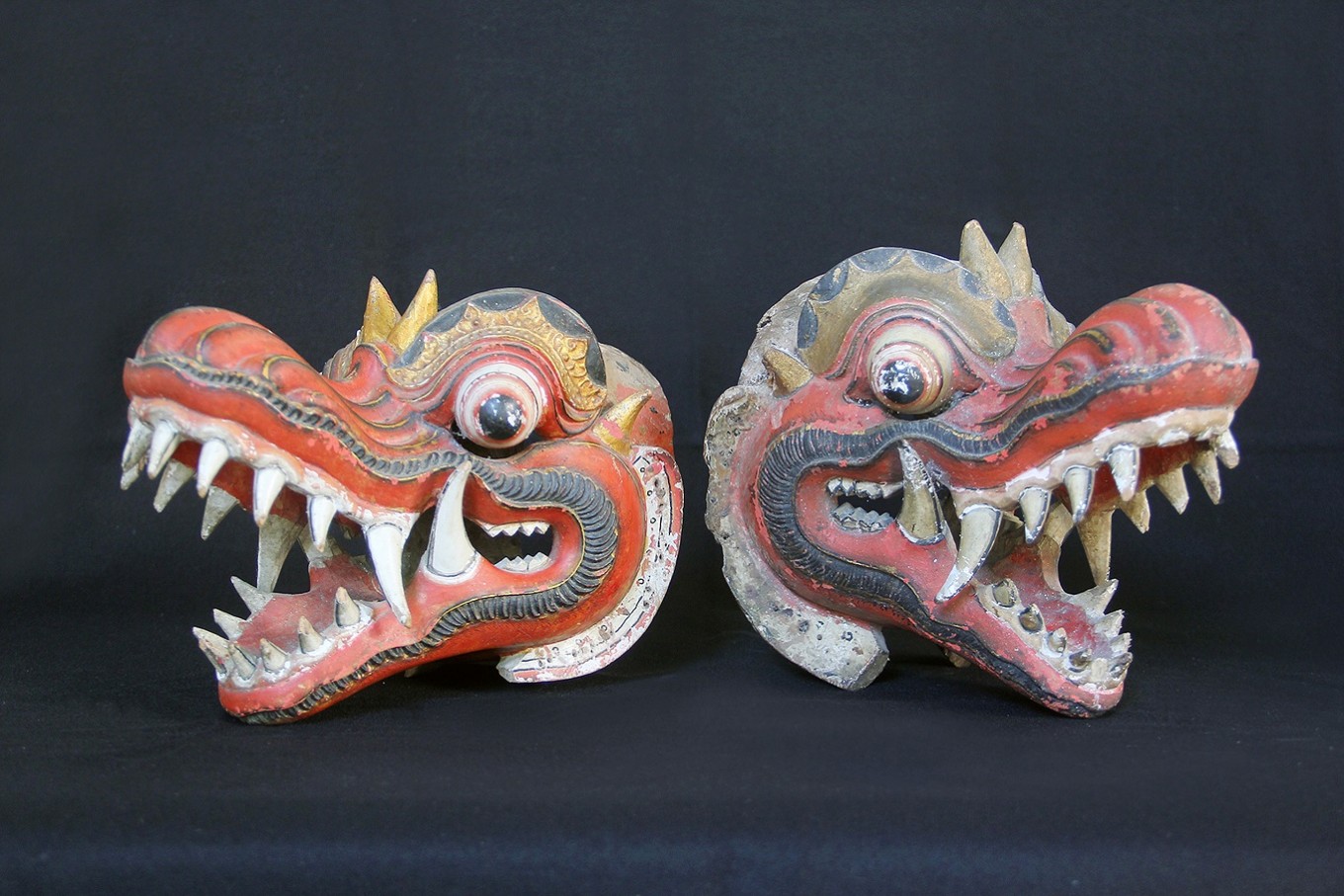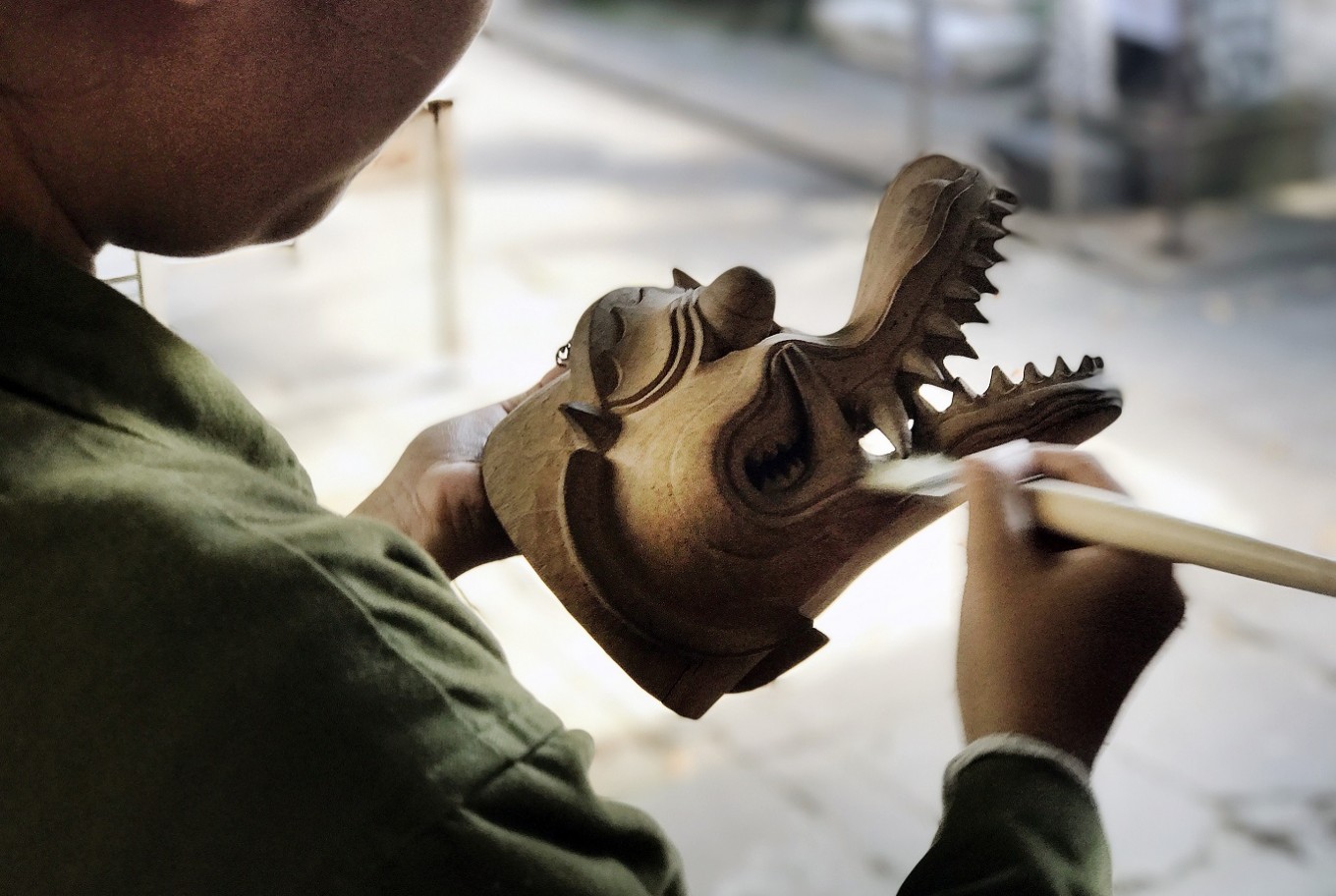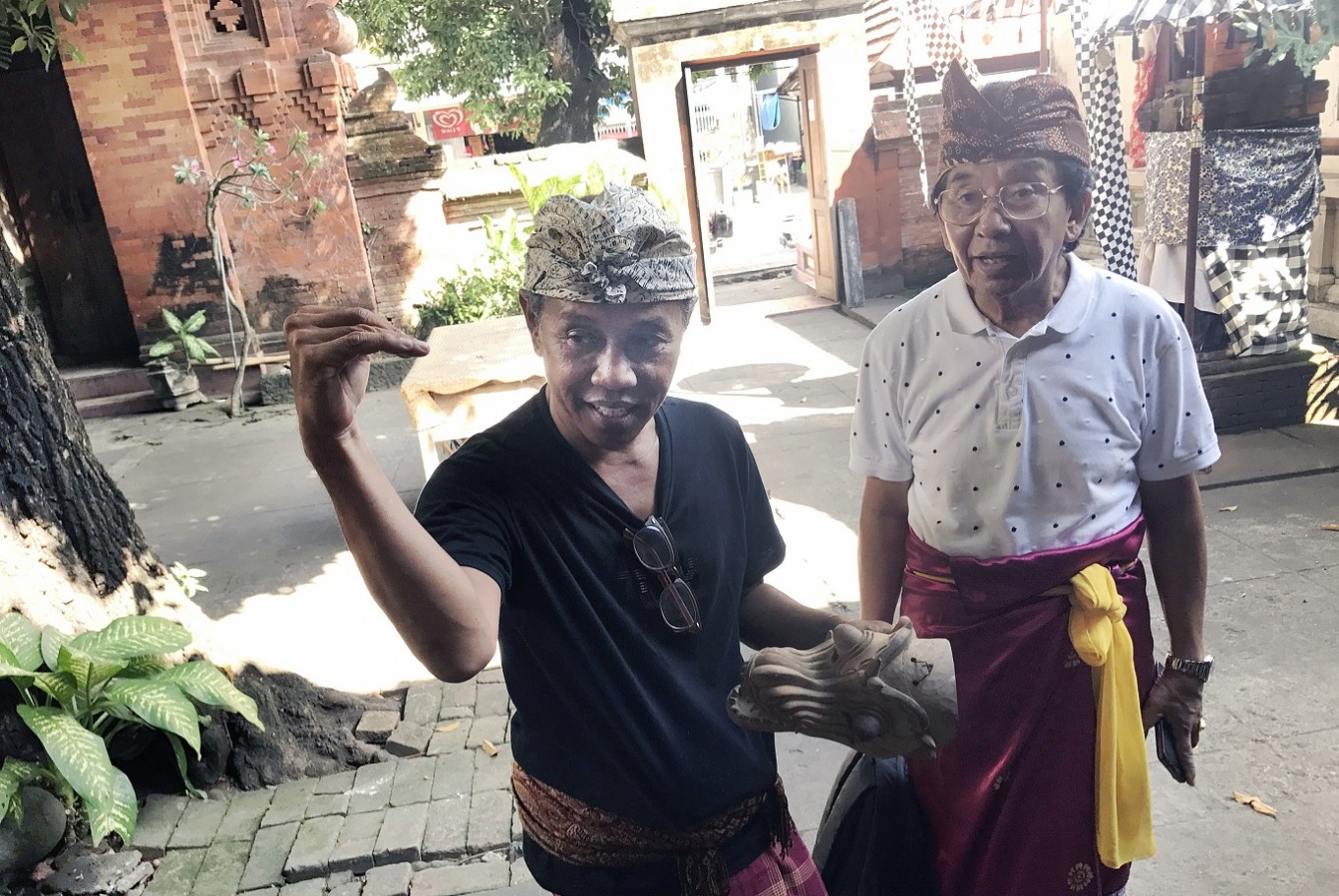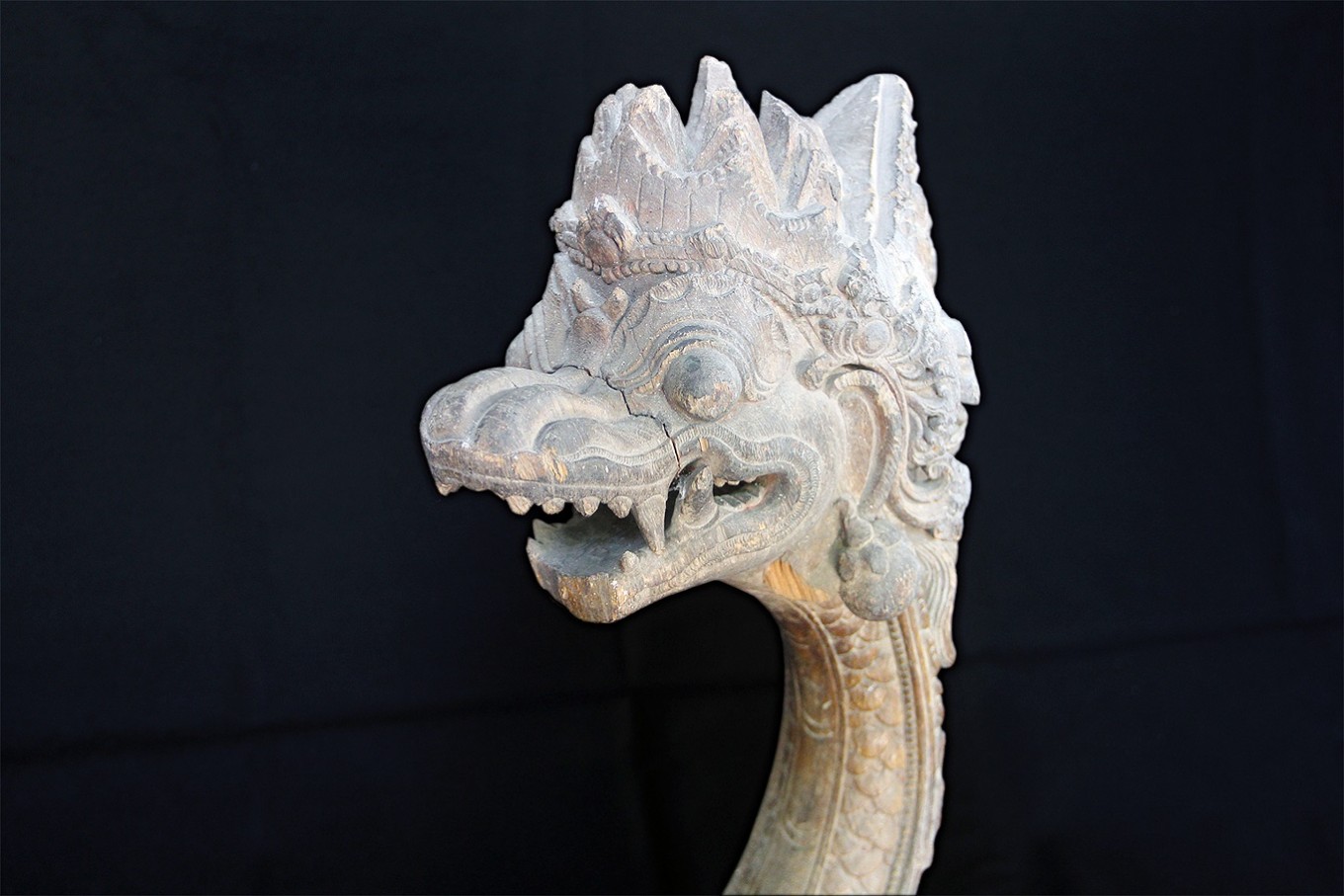Popular Reads
Top Results
Can't find what you're looking for?
View all search resultsPopular Reads
Top Results
Can't find what you're looking for?
View all search resultsPreserving legacy
Change text size
Gift Premium Articles
to Anyone
The Bali 1928 Archive collaboration is taking the first step in documenting the cultural artifacts of Bali’s royal palace.
Anak Agung Yoka Sara, one of Bali’s most prominent architects and impresarios, is not known as a morning person. His most industrious period of the day is usually late at night when he engages in nocturnal discussions with the island’s young talents through the ongoing progressive art series SPRITES, or the garbage education movement, Malu Dong.
Yet, on a recent Sunday he enthusiastically greeted the arrival of the morning. Dressed in a simple traditional Balinese sarong and with a burning cigarette between his lips, he emerged from a rustic stone gateway that separates the inner and middle courtyards of Puri Gerenceng, a royal palace in west Denpasar.
In his right hand was a red dragon-head mask and in his left an unpolished wooden statue.
There was a big smile on his face as he approached I Made Bandem, a senior art professor and one of the island’s most influential scholars, who was waiting on the veranda of the palace’s rustic yet majestic, colonial-style reception hall.
 Work in progress: This unfinished mask of a giant is one of around 80 masks and statues in the Puri Gerenceng collection.(Bali 1928 Archive/File)
Work in progress: This unfinished mask of a giant is one of around 80 masks and statues in the Puri Gerenceng collection.(Bali 1928 Archive/File)
“This one was carved by my great grandfather,” Yoka proudly said as he handed over the red dragon mask to Bandem, who said he immediately took a liking to it.
Read also: Bali, Ancient Rites in the Digital Age
The late Anak Agung Made Gde, Yoka’s great grandfather, was a famous artist and carver, one of the brightest stars ever produced by Puri Gerenceng. During his time the royal palace, which served as the defensive bastion for the larger Puri Denpasar in the east, was also a thriving school for the region’s aspiring mask performers and carvers. The Puri Denpasar royal palace was razed to the ground in 1906 during the historic Puputan Badung battle against the Dutch.
“This dragon mask is usually placed on the top of the ‘Janggan kite’ as its head,” Yoka added, referring to the most majestic of Bali’s traditional kites.
With flowing tails that could reach dozens of meters, Janggan kites are a breathtaking sight to behold on the vast blue sky of Bali. The record for the longest tail is currently held by Nagaraja, a Janggan kite created by the youths of Dangin Peken hamlet in Sanur: Their kite had a 234.5-meter-long tail. Gerenceng is known as a Janggan-making region and Yoka played a pivotal role in the 2013 production of the documentary movie, Janggan: Harvesting the Wind.
 Legacy: Two dragon masks underline the role of Puri Gerenceng as a school for aspiring performers and carvers.(Bali 1928 Archive/File)
Legacy: Two dragon masks underline the role of Puri Gerenceng as a school for aspiring performers and carvers.(Bali 1928 Archive/File)
Bandem took a ruler and began measuring the dimension of the mask as his son, Marlowe Bandem, the coordinator of the Bali 1928 Archive and Repatriation Project, typed the results of the measurements.
Later on, two photographers from STIMIK STIKOM Bali, an information and technology college Bandem co-founded that is one of the principal institutions behind Bali 1928, took detailed shots of the mask from multiple angles.
Read also: Malu Dong festival highlights garbage problem in Bali
“This is our first step in documenting and digitalizing the art collection of the royal palaces in Bali. We truly appreciate that members of the Gerenceng royal family have warmly welcomed this initiative,” Bandem said.
“Hopefully, through this initiative we will be able to build a digital database of these prized collections that the general public — scholars and art lovers — could easily access.”
Bandem stressed that access is very important for enhancing the cultural conservation and revitalization efforts. Wider and easier access would yield stronger public participation.
 Dusting off: A student cleans an unvarnished mask.(JP/I Wayan Juniarta)
Dusting off: A student cleans an unvarnished mask.(JP/I Wayan Juniarta)
Yoka revealed that Puri Gerenceng has a collection of about 80 masks and statues, as well as a gorgeous and historically important gamelan set.
Anak Agung Ngurah Adi Ardhana, a rising star in the Bali Legislative Council who also hails from Puri Gerenceng, praised the initiative and urged the other royal families on the island to follow suit.
“In the past, the royal palaces were the centers of the island’s art and culture; thus, we have the responsibility to educate the present generation of Balinese on the historic artworks and art forms bequeathed to us,” he said.
There are several important royal palaces in Denpasar, including Puri Satria — seen as the successor of Puri Denpasar’s lineage — Puri Pemecutan, Puri Jro Kuta and Puri Kesiman. All possess art collections of considerable size.
Read also: A touch of Bali in the heart of Jakarta
 Morning chat: Yoka Sara (left) gestures as he explains the movement of the Janggan kite to Made Bandem.(JP/I Wayan Juniarta)
Morning chat: Yoka Sara (left) gestures as he explains the movement of the Janggan kite to Made Bandem.(JP/I Wayan Juniarta)
Marlowe Bandem stated that the initiative was the logical extension of the Bali 1928 project.
“Through Bali 1928 we have repatriated significant numbers of Bali’s cultural artifacts from individuals and institutions abroad. Through this new initiative of documenting collections in royal palaces, we attempt to build a more comprehensive picture of our cultural legacy,” he said.
Spurred by the research of American ethnomusicologist Edward Herbst on historic recordings of traditional Balinese music and vocal music made in mid-1928 by German record company Odeon and Beka, Bali 1928 is an international collaboration involving STIMIK STIKOM Bali, Andrew W. Mellon Foundation, and Arbiter of Cultural Traditions aimed at acquiring and restoring those historical records and bringing them back to Bali.
It has published five volumes of CDs and DVDs of Herbst’s research and the remastered music of Odeon and Beka’s 111 discovered vinyl records.
The project has also managed to secure photographs and a total of six hour-long pieces of movie footage shot by some illustrious westerners, including Colin McPhee, Miguel Covarrubias and Rolf de Mare, of the island’s landscape, art performances and rituals in the 1930s.
“As part of bringing this wealth of historical information back to the Balinese, we have organized 35 public screenings in schools, community halls and public events across the island and have dedicated a room at STIMIK STIKOM Bali as a permanent exhibition venue for Bali 1928,” Marlowe said.











